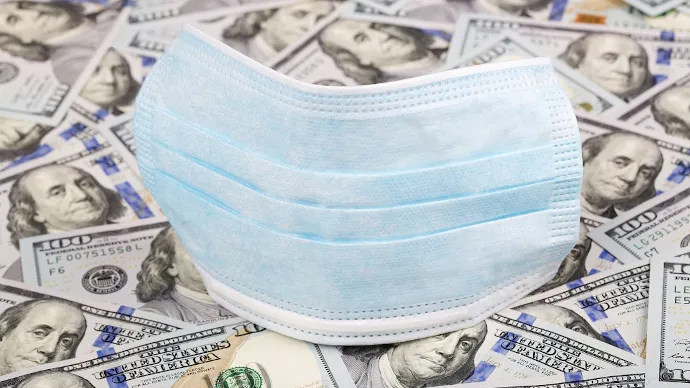According to the U.S. Bureau of Labor Statistics, the U.S. was still down 9.5 million jobs in February vs. the same time last year. This is despite a hopeful upturn in employment recently, thanks to the vaccine rollout and the leveling off of coronavirus cases in many areas.
In response, earlier this month Congress passed the $1.9 trillion American Rescue Plan (ARP). This new stimulus package focuses more on providing economic relief to households rather than businesses, like previous bills. As a result, economists predict the number of Americans living in poverty will drop by as much as a third. Especially for to low-income families and those whose earnings fluctuate from month to month.
“It’s a big deal,” David Wessel, director of The Hutchins Center on Fiscal and Monetary Policy at The Brookings Institution, told CBS News. “It’s one of the most significant steps we’ve taken to life children out of poverty. In many other countries, the government subsidizes families with children because they are the ultimate investment in the future.”
The Tax Policy Center estimates the bill will result in a 20 percent increase in income for the bottom 20 percent of earners (those making $25,000 or less).
The ARP also includes aid to state and local governments, K-12 schools and colleges, and some businesses. It also provides billions of dollars to aid in the pandemic response. In addition, it offers a bailout for...
- failing pension plans,
- housing and rental support,
- health and nutrition services to low-income children,
- and funding for child-care providers and early-childhood education.
Because there’s so much crammed into this new stimulus package, BILLSHARK thought we’d explain the parts that specifically apply to individuals.
The stimulus checks
In the two previous rounds of stimulus, pro-rated checks were sent out. To qualify, individuals had to make between $80,000 and $100,000, and couples between $160,000 and $200,00 a year. That is not this case for this third stimulus.
This time, only individuals making less than $75,000 a year and couples filing jointly who earn less than $150,000 a year will receive stimulus checks of $1,400 per person. In addition, each dependent will also receive a $1,400 check.
The checks from the new stimulus package have taken top priority at the IRS, even over the processing of 2019 tax returns. Direct deposits have already begun hitting some bank accounts (labeled “economic impact payments,” or “EIP3”).
If you received a refund in 2019 or 2020 and had your refund automatically deposited, the IRS will use this information to forward your stimulus payment. If not, you can provide your bank information using the “Get My Payment” tool. You can also use this tool to find out the status of your payment.
If you didn’t get the full amount of the first or second payment you were entitled to, you may qualify for the Recovery Rebate Credit. To do so, you will have to file a 2020 tax return, even if you’re not normally required to file one due to a low income or other taxpayer status.
Enhanced unemployment
If you’re unemployed, in addition to whatever payments you’re receiving from your state’s unemployment insurance program, you’ll continue to receive an extra $300 a week from the federal government through September 6.
In addition, if you’re receiving your health insurance coverage through COBRA, the bill provides a 100 percent subsidy for those payments– an increase from 85 percent. This will last from April 1 through the end of September. This will allow you to remain on your employer’s health plan at no cost.
Tax breaks
If you have dependent children and qualify for a child tax credit, this may be the most important provision. The bill increases the tax break from $2,000 to $3,000 for every child ages six to 17, and $3,600 for every child under six. This is available to most families, regardless of how little they make in a year.
Most important, the bill provides this money as an advance payment in smaller periodic increments. This way, you don’t just get one large lump sum at tax time. It’s unclear, however, when these payments will begin. They could start as monthly payments as soon as July, or be sent quarterly, possibly beginning in the fall. These details are still being finalized.
Another tax break contained in the bill applies to student loan forgiveness. Although it doesn’t actually contain forgiveness of student loans, it stipulates that any such forgiveness will be tax-free from 2021-2025. Ordinarily, any type of debt forgiveness (such as on credit cards, for example) is taxable as income.
Finally, the new stimulus package significantly expands the Earned Income Tax Credit (EITC) to individuals without children. The EITC will now be available to low- and moderate-income adults when they file their 2021 tax return. This results in a tax credit between $543 and $1,502, depending on income and filing status.
If you need even more extra cash, why not let BILLSHARK take a look at your bills for free? We’ve been able to find hundreds of dollars in savings for our clients by negotiating with cable, satellite, phone, and Internet providers to lower their rates. Remember, you pay nothing unless we save you money.
